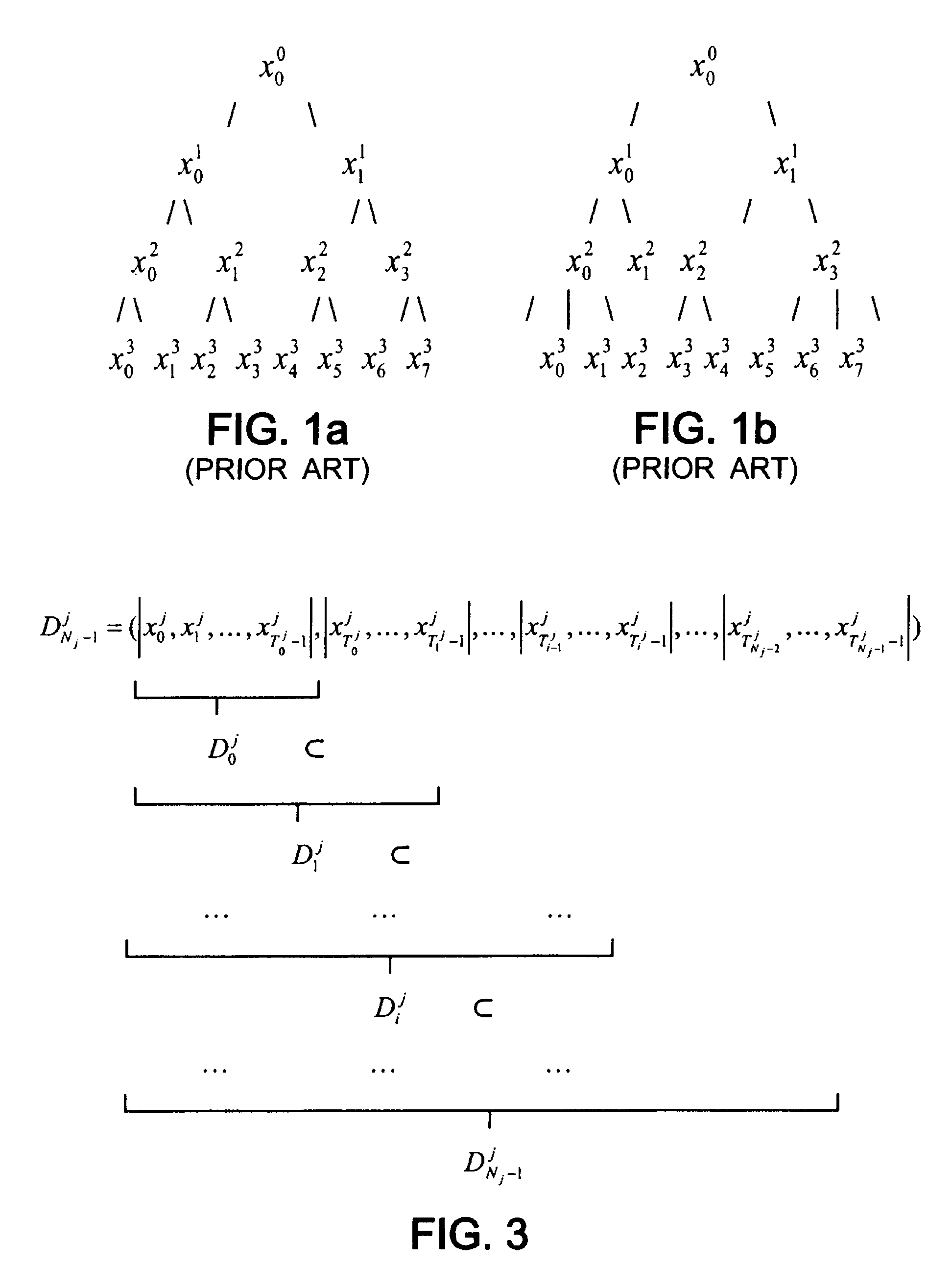Dimensional vector and variable resolution quantization
- Summary
- Abstract
- Description
- Claims
- Application Information
AI Technical Summary
Benefits of technology
Problems solved by technology
Method used
Image
Examples
Embodiment Construction
[0148]Referring firstly to FIGS. 2a and 2b which illustrate the two main properties of a dictionary DiN within the meaning of the present invention.
[0149]In FIG. 2a, for a given dimension N, dictionaries D1N, D2N, . . . , DiN of respective increasing resolutions r1, r2, . . . , ri are embedded inside one another. Thus, the dictionary DiN of maximum resolution ri may make it possible to determine a dictionary DjN of lower resolution rj (j
[0150]Referring now to FIG. 2b, any dictionary DiN of a given dimension N and of resolution ri is the union of two disjoint sets:[0151]a first set D′iN consisting of codevectors YN constructed (arrow F3) by inserting, into codevectors YN−1, dictionaries DiN−1 of lower dimension N−1 of the elements xj taken (arrow F2) from a finite set A of real numbers according to a finite collection of insertion rules {Rm}, an insertion rule R′(j,k) determining t...
PUM
 Login to View More
Login to View More Abstract
Description
Claims
Application Information
 Login to View More
Login to View More - R&D
- Intellectual Property
- Life Sciences
- Materials
- Tech Scout
- Unparalleled Data Quality
- Higher Quality Content
- 60% Fewer Hallucinations
Browse by: Latest US Patents, China's latest patents, Technical Efficacy Thesaurus, Application Domain, Technology Topic, Popular Technical Reports.
© 2025 PatSnap. All rights reserved.Legal|Privacy policy|Modern Slavery Act Transparency Statement|Sitemap|About US| Contact US: help@patsnap.com



